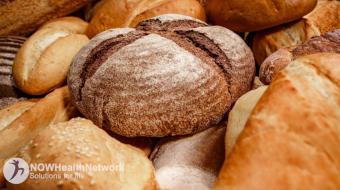Featured Videos
Carbohydrates are starches, fibres and sugars that are found in foods. There are different food groups that contain carbohydrates, such as grains and starches, fruits and vegetables and dairy products. They're also found in a food group called other, which contains foods such as cookies and candies. Seeing your family physician and asking for a referral to a registered dietician or nutritionist is a great please to start.
How Your Body Uses Carbohydrates
Carbohydrates are our main fuel and source of energy, and even the brain uses carbohydrates as its source of energy. During digestion, sugars and starches are broken down into simple sugars and absorbed into the bloodstream. They are then known as blood sugar (blood glucose).
Your body will digest and absorb short-chain carbohydrates (also called rapid-acting carbohydrates) more quickly, which can actually cause a spike in the blood sugar. Some examples would be juice, white bread and sugar. Longer-chain carbohydrates take the body longer to digest and absorb, causing less of an effect on the blood sugar. Examples are legumes, oats, barley and berries. These carbohydrates can play a very important role in diabetes management.
Types of Carbohydrate
There are three types of carbohydrate:
• Sugar. The simplest form. Types of sugar carbohydrate include fruit sugar (fructose), table sugar (sucrose) and milk sugar (lactose).
• Starch. Starch is composed of many sugar units bonded together and is a complex carbohydrate. It's found in foods such as vegetables and grains.
• Fibre. Also a complex carbohydrate. There are two types of fibre. Insoluble fibre helps keep your digestive system healthy and promotes regular bowel movements each day. Soluble fiber helps to decrease your total cholesterol and maintain a stable blood sugar.
Approximately a quarter of the food on your plate should be carbohydrates, amounting to about one cup, or a fist-sized serving. Look for the carbohydrate content - broken down into things like starches, fibre and added sugars - of packaged foods on the label. Seeing your family physician and asking for a referral to a registered dietician or nutritionist is a great please to start.
Talk to your nutritionist if you'd like more information on carbohydrates.
Visit HealthChoicesFirst.com for more videos and resources on healthy eating.
Carbohydrates are the sugars, starches and fibers found in fruits, grains, vegetables and milk products. Though often maligned in trendy diets, carbohydrates — one of the basic food groups — are important to a healthy lif

